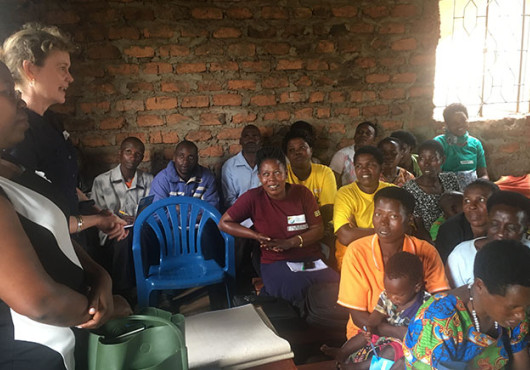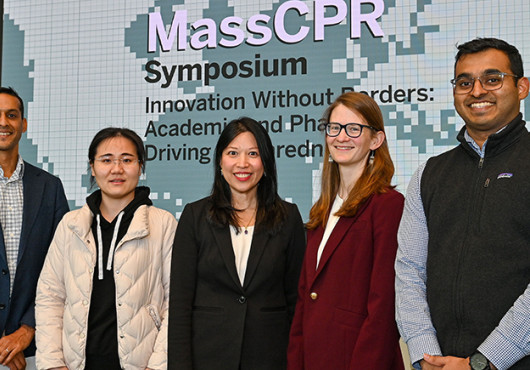
This article is part of Harvard Medical School’s continuing coverage of medicine, biomedical research, medical education, and policy related to the SARS-CoV-2 pandemic and the disease COVID-19.
A recent analysis offers a new perspective on the disproportionate impact that COVID-19 has had on people of color, low-income populations, and other structurally disadvantaged groups.
The research, conducted by Harvard Medical School researchers at Massachusetts General Hospital, was published June 8 in a research letter to the Journal of General Internal Medicine. The findings emphasize the urgency of addressing inequities that have been exposed by the coronavirus pandemic, the researchers said.
“At Mass General, we are deeply interested in uncovering disparities and then fixing them,” said cardiologist Jason Wasfy, HMS assistant professor of medicine and director for outcomes research at the Mass General Heart Center.
In pursuit of that mission, Wasfy, lead author of the research letter, and several colleagues decided to analyze the socioeconomic and demographic characteristics of patients tested for COVID-19 at 14 sites within the Mass General Brigham system from the earliest days of the pandemic until mid-December 2020. The sites included hospitals, community health centers, and urgent care clinics. Combining the results of inpatient and outpatient testing for COVID-19 distinguished this analysis from most earlier inquiries, which had primarily focused on inpatient testing.
“That made our sample more representative,” said Wasfy, who is also a medical director of the Massachusetts General Physicians Organization (MGPO). “It’s a more valid way of looking at the total effect of COVID-19 on all patients.”
The analysis is also distinguished by its sheer size: It is based on test results from 394,536 patients. Electronic health records were used to compile data regarding each patient’s gender, race, insurance status, and place of residence (indicated by ZIP code). Publicly available data for median household income and employment status was then compiled for each ZIP code.
The analysis found that 29,977 patients, 7.6 percent of those tested, had positive results for COVID-19. Males, 8.2 percent, were slightly more likely than females, 7.2 percent, to test positive.
Stark contrasts emerged when Wasfy and his colleagues broke down positive cases by race and socioeconomic factors. For example:
- The study found that 5.6 percent of white patients tested positive, compared to 17.2 percent of Hispanic patients and 11.9 percent of Black patients.
- Using ZIP codes, they found that patients from communities where the median annual household income was $70,000 or less were nearly three times more likely to test positive for COVID-19 than patients from communities where median household earnings were greater than $100,000 per year (13.3 percent compared to 4.7 percent).
- Medicaid patients had more positive tests (14.2 percent) than those with commercial insurance (6.8 percent).
- People who lived in areas where unemployment was higher than 5 percent were nearly twice as likely to have COVID-19 than those from communities with unemployment of 3.5 percent or less (10.7 percent compared to 5.8 percent).
- On the other hand, in ZIP codes populated by a significant portion of people with jobs in the service sector, who couldn’t stay home and work remotely during the pandemic, were more than three times as likely to contract COVID-19 than others from communities with relatively fewer service-sector employees (13.4 percent compared to 4.2 percent).
“Although our study is innovative in using patient-level data to assess the association between positive COVID tests and socioeconomic and demographic characteristics of individual patients, the results confirm that structural constructs in our society persevere and contribute to health outcomes inequities,” said Marcela del Carmen, HMS professor of obstetrics, gynecology, and reproductive biology at Mass General, interim president and chief medical officer of MGPO, and senior author of the paper.
Wasfy echoes that sentiment, noting that social phenomena—not biology—have a large influence on who becomes infected with the coronavirus. “Societal disadvantages that were baked in before the pandemic led the pandemic to take a tremendously different toll on specific groups of patients,” Wasfy said, noting that these factors (often called social determinants of health) influence the risk for other conditions, such as heart disease and type 2 diabetes. “Our results show how profoundly systemic, structural aspects of society are revealed by assessing the spread of disease.”
This research was funded by the American Heart Association and MGPO.
Adapted from a Mass General news release.





